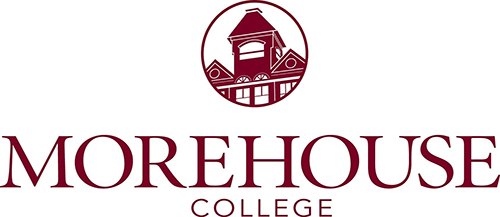

Project:
I will be working on creating Culturally Situated Design Teaching Tools(CDSTs). In this I will be creating multiple scenarios and teaching tools designed to teach children and teens (K-12) concepts. My focus will be on creating tools that will be directed at youth in impoverished areas to learn complex topics pertaining to Computer Science.
Week 1 (June 17-21):
Intial week at Auburn University under the tutelage of Dr. Cheryl Seals. I was tasked with research regarding HCI(Human Computer Interaction), Handheld Technologies and Blended Learning. I was able to make great strides in understanding the methodologies that would be necessary to correctly implement Blended Learning.
Week 2 (June 24-28):
Following my week of research and understanding subsequent materials I then moved on to implementation. For this area, I worked with Albanie T. Bolton. The purpose of this corroboration was to supplement Ms. Bolton in creating diverse scenarios for minority youth. These scenarios are created to stimulate involvement for juveniles who might be interested in any of the STEM fields, particularly Computer Science. My scenarios are centered around understanding and creating Abstractions at a High School level.
Week 3 (June 24-28):
Albanie T. Bolton has checked off on my previous scenarios for teaching Abstraction. This week marked the first beginning steps in order to properly move into game creation. I have created brief scenario mock-ups, meticulously detailing game progression. I am currently finalizing a GUI(Graphic User Interface) design for the game. Satisfying criteria for teaching a topic as well as keeping it fun and interesting has proven a challenge. I will be meticulously rewriting and designing the implementation of my scenario.
Week 4(July 1 - 5):
Due to Independence Day, this is a markedly short week. I was able to do a brief prototype in two different programs. Testing which one would better prepare me for the task at hand. Currently the toss-up is between "QT Creator" and "Multimedia Fusion 2." QT Creator allows me excellent control over the back-end (programming) while Multimedia Fusion 2 does not have that capability, but it's front-end and visual interface appear to more than compensate. It's currently an issue of time required and need. Comprehensive control of the back-end may be an irrelevant requirement for this project.
Week 5(July 8 - 12):
I have decided to continue along this path using Multimedia Fusion 2. While I lament that I will not be programming explicitly for this project, I am reminded that it is merely one of many for my time in the program. Multimedia Fusion 2 has allowed me to create an incredibly interactive, if currently rudimentary, experience that I will feel will much better serve in teaching Abstraction. An added bonus is that while it will still require a considerable amount of time, I am able to accomplish much more than I would have in QT Creator. The introduction, tutorial and first level of the game have been created. I am very pleased with the tools currently at my disposal.
Week 6(July 15 - 19):
I've made great strides in the layout of the program. I've rebranded the the entire introduction, tutorial and first level. As well as creating a unique control scheme. I'm currently inbetween thoughts regarding how to implement physics. Currently working on an array set to give the illusion of multiple pieces creating one unique tool based on permutations. Unfortunately, due to the interface it is substantially more difficult then had I been coding.
Week 7(July 22 - 26):
This week is dedicated to doing research within the field of Human Computing Interaction. Specifically I've been researching and analyzing study cases related to blended learning. Since our projects are attempts at creating a blended learning environment to better facilitate learning Dr. Seals advised us to learn more on the subject. There is a lot of great information regarding blended learning and academic improvement specifically within low socio-economic areas. (Rural and Urban)
Week 8(July 29 - August 2)
Upon more research, I've decided to rebrand parts of the level system. To make it a more intuitive interface, as well as allowing any teachers/researchers in the future to more easily modify it. This consists of making the program more accessible (For users of Multimedia Fusion 2). I can not guarantee that this will serve a larger purpose outside of abstraction, but hopefully it encourages more readily available templates for other teacher/class interactions.
Week 9(August 5 - 9):
Worked on creating personal website for DREU. Completed (mostly) the Abstraction program. I am of the opinion that children K-12 will enjoy it. As it combines classic video games (Super Mario) with more modern gaming titles. I do not think the concept of abstraction will be lost. As it stands, each level contains a specific enemy. This enemy can only be vanquished by a specific permutation of the three tool parts they are provided. The final boss forces them to create a new tool (while throwing in a few duds) by adding an additional tool for permutation. Toying with the idea of giving the parts specific strengths and weaknesses as well as backgrounds for the enemy. If the game seems to difficult, this will make it easier for those playing to better pick a permutation, instead of the traditional guess and check method.
Week 10(August 12 - 16)
Starz Conference with Dr. Seals and fellow interns. Great experiencing in seeing others research as well as presentations in a wide range. Huge networking potential as well as simply being an amazing time among my peers.
Simple coding is science. The art of the programmer is creation. Breathing life into numbers. Writing your own world.